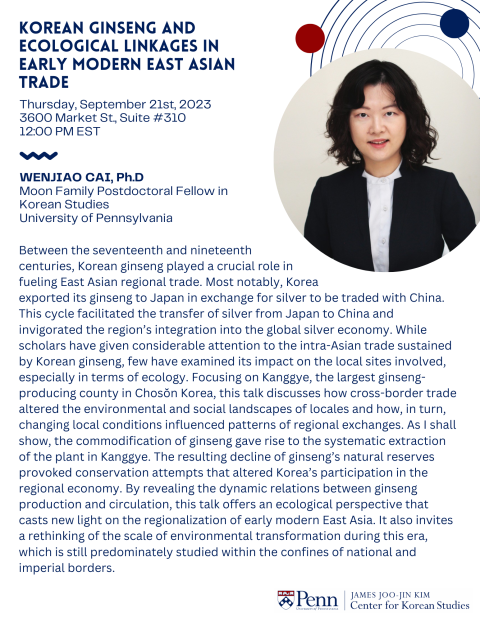
Korean Studies Colloquium
3600 Market Street, Suite 310 Philadelphia, PA 19104
Between the seventeenth and nineteenth centuries, Korean ginseng played a crucial role in fueling East Asian regional trade. Most notably, Korea exported its ginseng to Japan in exchange for silver to be traded with China. This cycle facilitated the transfer of silver from Japan to China and invigorated the region’s integration into the global silver economy. While scholars have given considerable attention to the intra-Asian trade sustained by Korean ginseng, few have examined its impact on the local sites involved, especially in terms of ecology. Focusing on Kanggye, the largest ginseng-producing county in Chosŏn Korea, this talk discusses how cross-border trade altered the environmental and social landscapes of locales and how, in turn, changing local conditions influenced patterns of regional exchanges. As I shall show, the commodification of ginseng gave rise to the systematic extraction of the plant in Kanggye. The resulting decline of ginseng’s natural reserves provoked conservation attempts that altered Korea’s participation in the regional economy. By revealing the dynamic relations between ginseng production and circulation, this talk offers an ecological perspective that casts new light on the regionalization of early modern East Asia. It also invites a rethinking of the scale of environmental transformation during this era, which is still predominately studied within the confines of national and imperial borders.
 James Joo-Jin Kim Center for Korean Studies
James Joo-Jin Kim Center for Korean Studies